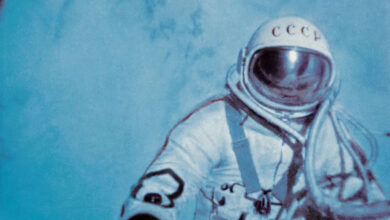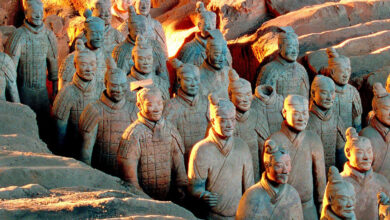
Podcast: Play in new window | Download
The Hawaiian Islands had been discovered many hundreds of years before the English explorer James Cook landed on what he called the Sandwich Islands. Polynesian seafarers from the Marquesas Islands in French Polynesia came to Hawaii in around 400 A.D. They navigated there, after studying wave patterns and currents and utilizing astronomy.
However, Captain James Cook was the European settler credited with the discovery of Hawaii in 1778. Born 7 November 1728 in England, Cook was a British Naval captain and world explorer. His background took him from the merchant navy to the Royal Navy, serving in the Seven Years’ War. Cook’s time in the Navy gave him the chance to become an authority on cartography or map-making. It was that talent that got him noticed by the Royal Society of London, who tasked him with the challenge of surveying the Pacific Ocean.
Cook set out on three voyages in pursuit of the mission, landing in faraway places like Australia on the first voyage, Antarctica on the second, and Hawaii on the third. The third voyage lasted from 1776 to 1779, taking Cook from the vast Bering Sea through the Aleutians where he had to do some repairs on one of his ships. The Resolution and the Discovery were the two ships on this last voyage.
The Sandwich Islands received their names courtesy of Cook honouring the Earl of Sandwich, John Montagu, the First Lord of the Admiralty. The island of Oahu was the first island spotted in early 1778 as Cook and his team were heading towards Alaska.
He left Alaska in late October and sailed south to wait out the winter, having been pushed out by the encroaching Bering Sea ice sheet. Believing Hawaii to be an ideal location to rest and perform some additional much-needed boat repairs, Cook took his ships and headed back south again. Maui was the first island discovered on 26 November 1778. As it was nearing winter, it took some time for the crew to find a decent place to drop anchor and come ashore. In total it took eight weeks of sailing around the islands before they found a place that they liked.
On 17 January 1779, they came ashore at Kealakekua Bay on the main island of Hawaii, but not after being greeted several times by the Hawaiians. The hosts brought gifts in canoes each time and would come aboard the ships without worrying about their own safety.
Cook was greeted warmly at first, with Chief Palea and Koa’a the priest boarding the ship and bringing Cook back to shore where he was treated like a VIP. What he didn’t know was that he had arrived during the harvest festival Makahiki that was dedicated to the god Lono. The Resolution had mast and sail components that looked like items used during Makahiki.
Cook and his crew were viewed as royalty during the ceremony, with some islanders believing Cook to be Lono come to life. The crew ended up staying there for a month, restocking the ships and getting some rest and shore leave before embarking on a return trip to the north again. The winter storms damaged the main mast of the Resolution, however, which forced Cook to return to Hawaii to Kealakekua Bay to fix the problem. Sadly this would turn out to be a fatal mistake.
Whether the islanders had believed Cook to be Lono and were upset that he had come back after the festival was over, or they just did not want this interloper to be around them any longer remains a mystery. What is clear is that there were violent disagreements between the British explorers and the islanders.
Cook was killed by the islanders on 14 February 1779 after a skirmish during which the Hawaiians took one of the smaller boats in Cook’s party. Cook then tried to take Kalaniopu’u, the king, hostage to be able to negotiate the return of the boat. The Hawaiians stopped the hostage-taking effort and the British returned to the beach to attempt to get their boats launched. Cook was struck on the back of the head and knocked down, then he was stabbed, possibly by chief Kalanimanokahoowaha. Also killed that day were four more British mariners while two others were wounded. The Hawaiians lost 30 when the British fired upon the shore.
Cook was then disembowelled and cooked such that his flesh could be more easily removed from the bones. The bones were cleaned and preserved as a religious symbol. Though at first glance his death and the subsequent rituals seem barbaric, they were actually performed out of respect for him. Some of his body parts were returned to the English and a burial at sea was held on 22 February.
Without their leader, the crews of the Resolution and the Discovery did complete some additional mapping of the western Pacific before returning to England on 4 October 1780.
Cook’s journeys to the Pacific surely provided the world with some fascinating details of the islands and opened wide the door of curiosity through which other travellers would soon follow. To say that he discovered the islands himself is disingenuous, but he surely can be credited with being one of the first Westerners to fall in love with the tropical paradise that is Hawaii.
Podcast: Play in new window | Download





